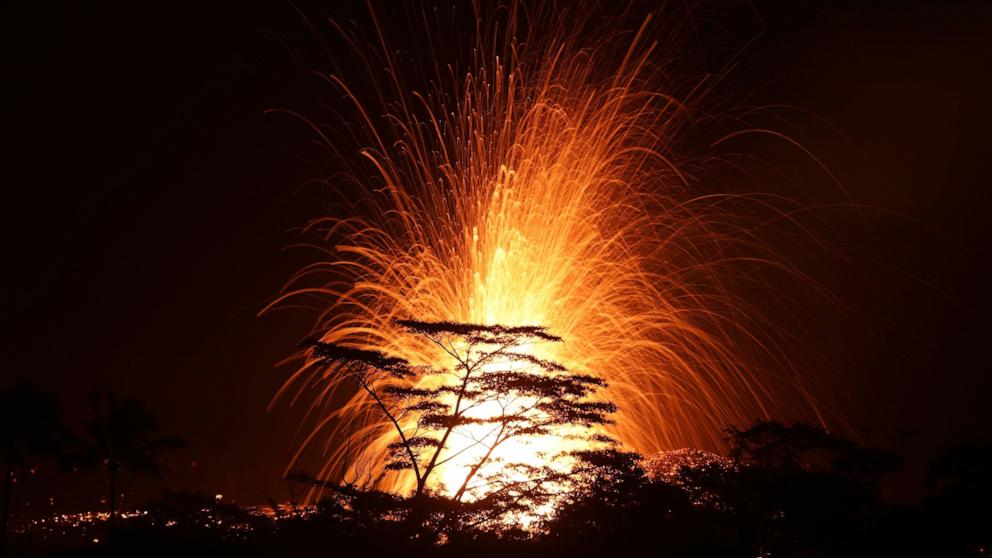Hunga Tonga-Hunga Ha’apai (Hunga Tonga for short) erupted on January 15, 2022 in the Pacific Kingdom of Tonga. It created a tsunami that triggered warnings throughout the Pacific basin and sent sound waves around the world multiple times.
A new study published in the Journal of Climate investigates the impact of this eruption on the climate.
Our findings show that the volcano can explain last year’s extremely large ozone hole, as well as the much wetter summer of 2024 than expected.
The eruption could have long-lasting effects on our winter weather for years to come.
A cooling cloud of smoke
Typically, volcanic smoke—and especially the sulfur dioxide contained in the smoke plume—ends up cooling the Earth’s surface for a short period of time.
That’s because sulfur dioxide turns into sulfate aerosols, which send sunlight back into space before it reaches the surface. This shading effect means that the surface cools for a while, until the sulfate falls back to the surface or leaches out.
This did not happen to Hunga Tonga.
Being an underwater volcano, Hunga Tonga produced little smoke but a lot of steam: 100-150 million tons, the equivalent of 60,000 Olympic swimming pools. The immense heat of the eruption turned vast amounts of seawater into steam, which was then blown high into the atmosphere by the force of the eruption.

Japan Meteorological Agency, CC BY
All that water ended up in the stratosphere: the layer of the atmosphere between 15 and 40 kilometers above the surface, which produces neither clouds nor rain because it is too dry.
Water vapor in the stratosphere has two main effects. First, it helps in chemical reactions that destroy the ozone layer, and secondly, it is a very powerful greenhouse gas.
There is no precedent in our observations of volcanic eruptions to know what that water would do to our climate and for how long. This is because the only way to measure water vapor in the entire stratosphere is via satellite. They have existed only since 1979 and during that time there was no eruption similar to Hung Tonga.
Follow the steam
Stratospheric science experts around the world began examining satellite observations from the first day of the eruption. Some studies focused on the more traditional effects of volcanic eruptions, such as the amount of sulfate aerosols and their evolution after the eruption, some focused on the possible effects of water vapor, and some included both.
But no one really knew how water vapor would behave in the stratosphere. How long will it stay in the stratosphere? Where will they go? And, most importantly, what does this mean for the climate while there is still water vapor?
These were exactly the questions we set out to answer.
We wanted to find out the future, which, unfortunately, is impossible to measure. That’s why we turned to climate models that are specially made to look into the future.
We made two simulations with the same climate model. In one, we assumed that the volcano had not erupted, while in the other, we manually added 60,000 Olympic swimming pools worth of water vapor to the stratosphere. We then compared the two simulations, knowing that any differences must be due to the added water vapor.

OUR
What did we learn?
The large ozone hole from August to December 2023 was at least partially caused by Hung Tong. Our simulations predicted that ozone hole almost two years in advance.
Namely, this was the only year in which we expected any impact of a volcanic eruption on the ozone hole. By then, water vapor has had enough time to reach the polar stratosphere above Antarctica, and during later years there will not be enough water vapor left to increase the ozone hole.
As the ozone hole lasted until the end of December, it brought with it a positive phase of the Southern Annular Mode during the summer of 2024. For Australia, this meant a higher chance of a wet summer, which was exactly the opposite of what most people expected with the declared El Niño. Again, our model predicted this two years in advance.
In terms of global mean temperatures, which are a measure of the climate change we are experiencing, Hung Tong’s impact is very small, only about 0.015 degrees Celsius. (This was independently confirmed by another study.) This means that the incredibly high temperatures we have been measuring for about a year now cannot be attributed to the Hung Tong eruption.
A break until the end of the decade
But there are some surprising, lasting impacts in some regions of the planet.
For the northern half of Australia, our model predicts colder and wetter-than-normal winters until about 2029. For North America, it predicts warmer-than-normal winters, while Scandinavia again predicts colder-than-normal winters.
The volcano appears to change the way some waves travel through the atmosphere. And atmospheric waves are responsible for ups and downs, which directly affect our weather.
It is important to clarify here that this is only one study and one particular way of researching what impact the eruptions of Hung Tong could have on our weather and climate. Like any other climate model, ours is not perfect.
We also did not include any other effects, such as the El Niño–La Niña cycle. But we hope that our study will spark scientific interest in trying to understand what such a large amount of water vapor in the stratosphere might mean for our climate.
Whether this will confirm or contradict our findings remains to be seen – we welcome both outcomes.


